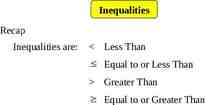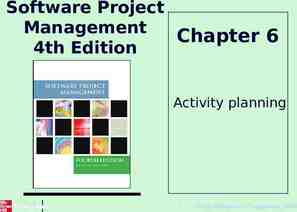Chapter 2: Mining Association Rules
53 Slides131.00 KB

Chapter 2: Mining Association Rules

Road map Basic concepts Apriori algorithm Different data formats for mining Mining with multiple minimum supports Mining class association rules Summary CS583, Bing Liu, UIC 2

Association rule mining Proposed by Agrawal et al in 1993. It is an important data mining model studied extensively by the database and data mining community. Assume all data are categorical. No good algorithm for numeric data. Initially used for Market Basket Analysis to find how items purchased by customers are related. Bread Milk CS583, Bing Liu, UIC [sup 5%, conf 100%] 3

The model: data I {i1, i2, , im}: a set of items. Transaction t : t a set of items, and t I. Transaction Database T: a set of transactions T {t1, t2, , tn}. CS583, Bing Liu, UIC 4

Transaction data: supermarket data Market basket transactions: t1: {bread, cheese, milk} t2: {apple, eggs, salt, yogurt} tn: {biscuit, eggs, milk} Concepts: An item: an item/article in a basket I: the set of all items sold in the store A transaction: items purchased in a basket; it may have TID (transaction ID) A transactional dataset: A set of transactions CS583, Bing Liu, UIC 5

Transaction data: a set of documents A text document data set. Each document is treated as a “bag” of keywords doc1: doc2: doc3: doc4: doc5: doc6: doc7: Student, Teach, School Student, School Teach, School, City, Game Baseball, Basketball Basketball, Player, Spectator Baseball, Coach, Game, Team Basketball, Team, City, Game CS583, Bing Liu, UIC 6

The model: rules A transaction t contains X, a set of items (itemset) in I, if X t. An association rule is an implication of the form: X Y, where X, Y I, and X Y An itemset is a set of items. E.g., X {milk, bread, cereal} is an itemset. A k-itemset is an itemset with k items. E.g., {milk, bread, cereal} is a 3-itemset CS583, Bing Liu, UIC 7

Rule strength measures Support: The rule holds with support sup in T (the transaction data set) if sup% of transactions contain X Y. Confidence: The rule holds in T with confidence conf if conf% of tranactions that contain X also contain Y. sup Pr(X Y). conf Pr(Y X) An association rule is a pattern that states when X occurs, Y occurs with certain probability. CS583, Bing Liu, UIC 8

Support and Confidence Support count: The support count of an itemset X, denoted by X.count, in a data set T is the number of transactions in T that contain X. Assume T has n transactions. Then, ( X Y ).count support n ( X Y ).count confidence X .count CS583, Bing Liu, UIC 9

Goal and key features Goal: Find all rules that satisfy the userspecified minimum support (minsup) and minimum confidence (minconf). Key Features Completeness: find all rules. No target item(s) on the right-hand-side Mining with data on hard disk (not in memory) CS583, Bing Liu, UIC 10

An example Transaction data Assume: minsup 30% minconf 80% Beef, Chicken, Milk Beef, Cheese Cheese, Boots Beef, Chicken, Cheese Beef, Chicken, Clothes, Cheese, Chicken, Clothes, Milk Chicken, Milk, Clothes An example frequent itemset: {Chicken, Clothes, Milk} t1: t2: t3: t4: t5: Milk t6: t7: [sup 3/7] Association rules from the itemset: Clothes Milk, Chicken Clothes, Chicken Milk, CS583, Bing Liu, UIC [sup 3/7, conf 3/3] [sup 3/7, conf 3/3] 11

Transaction data representation A simplistic view of shopping baskets, Some important information not considered. E.g, the quantity of each item purchased and the price paid. CS583, Bing Liu, UIC 12

Many mining algorithms There are a large number of them!! They use different strategies and data structures. Their resulting sets of rules are all the same. Given a transaction data set T, and a minimum support and a minimum confident, the set of association rules existing in T is uniquely determined. Any algorithm should find the same set of rules although their computational efficiencies and memory requirements may be different. We study only one: the Apriori Algorithm CS583, Bing Liu, UIC 13

Road map Basic concepts Apriori algorithm Different data formats for mining Mining with multiple minimum supports Mining class association rules Summary CS583, Bing Liu, UIC 14

The Apriori algorithm Probably the best known algorithm Two steps: Find all itemsets that have minimum support (frequent itemsets, also called large itemsets). Use frequent itemsets to generate rules. E.g., a frequent itemset {Chicken, Clothes, Milk} [sup 3/7] and one rule from the frequent itemset Clothes Milk, Chicken CS583, Bing Liu, UIC [sup 3/7, conf 3/3] 15

Step 1: Mining all frequent itemsets A frequent itemset is an itemset whose support is minsup. Key idea: The apriori property (downward closure property): any subsets of a frequent itemset are also frequent itemsets ABC AB A CS583, Bing Liu, UIC ABD AC B AD ACD BC C BCD BD CD D 16

The Algorithm Iterative algo. (also called level-wise search): Find all 1-item frequent itemsets; then all 2-item frequent itemsets, and so on. In each iteration k, only consider itemsets that contain some k-1 frequent itemset. Find frequent itemsets of size 1: F1 From k 2 Ck candidates of size k: those itemsets of size k that could be frequent, given Fk-1 Fk those itemsets that are actually frequent, Fk Ck (need to scan the database once). CS583, Bing Liu, UIC 17

Dataset T TID Example – minsup 0.5 T100 Finding frequent itemsets T200 Items 1, 3, 4 2, 3, 5 T300 1, 2, 3, 5 T400 2, 5 itemset:count 1. scan T C1: {1}:2, {2}:3, {3}:3, {4}:1, {5}:3 F1: C2: {1}:2, {2}:3, {3}:3, {5}:3 {1,2}, {1,3}, {1,5}, {2,3}, {2,5}, {3,5} 2. scan T C2: {1,2}:1, {1,3}:2, {1,5}:1, {2,3}:2, {2,5}:3, {3,5}:2 F2: C3: {1,3}:2, {2,3}:2, {2,5}:3, {3,5}:2 {2, 3,5} 3. scan T C3: {2, 3, 5}:2 F3: {2, 3, 5} CS583, Bing Liu, UIC 18

Details: ordering of items The items in I are sorted in lexicographic order (which is a total order). The order is used throughout the algorithm in each itemset. {w[1], w[2], , w[k]} represents a k-itemset w consisting of items w[1], w[2], , w[k], where w[1] w[2] w[k] according to the total order. CS583, Bing Liu, UIC 19

Details: the algorithm Algorithm Apriori(T) C1 init-pass(T); F1 {f f C1, f.count/n minsup}; // n: no. of transactions in T for (k 2; Fk-1 ; k ) do Ck candidate-gen(Fk-1); for each transaction t T do for each candidate c Ck do if c is contained in t then c.count ; end end Fk {c Ck c.count/n minsup} end return F k Fk; CS583, Bing Liu, UIC 20

Apriori candidate generation The candidate-gen function takes Fk-1 and returns a superset (called the candidates) of the set of all frequent k-itemsets. It has two steps join step: Generate all possible candidate itemsets Ck of length k prune step: Remove those candidates in Ck that cannot be frequent. CS583, Bing Liu, UIC 21

Candidate-gen function Function candidate-gen(Fk-1) Ck ; forall f1, f2 Fk-1 with f1 {i1, , ik-2, ik-1} and f2 {i1, , ik-2, i’k-1} and ik-1 i’k-1 do c {i1, , ik-1, i’k-1}; // join f1 and f2 Ck Ck {c}; for each (k-1)-subset s of c do if (s Fk-1) then delete c from Ck; // prune end end return Ck; CS583, Bing Liu, UIC 22

An example F3 {{1, 2, 3}, {1, 2, 4}, {1, 3, 4}, {1, 3, 5}, {2, 3, 4}} After join C4 {{1, 2, 3, 4}, {1, 3, 4, 5}} After pruning: C4 {{1, 2, 3, 4}} because {1, 4, 5} is not in F3 ({1, 3, 4, 5} is removed) CS583, Bing Liu, UIC 23

Step 2: Generating rules from frequent itemsets Frequent itemsets association rules One more step is needed to generate association rules For each frequent itemset X, For each proper nonempty subset A of X, Let B X - A A B is an association rule if Confidence(A B) minconf, support(A B) support(A B) support(X) confidence(A B) support(A B) / support(A) CS583, Bing Liu, UIC 24

Generating rules: an example Suppose {2,3,4} is frequent, with sup 50% Proper nonempty subsets: {2,3}, {2,4}, {3,4}, {2}, {3}, {4}, with sup 50%, 50%, 75%, 75%, 75%, 75% respectively These generate these association rules: 2,3 4, confidence 100% 2,4 3, confidence 100% 3,4 2, confidence 67% 2 3,4, confidence 67% 3 2,4, confidence 67% 4 2,3, confidence 67% All rules have support 50% CS583, Bing Liu, UIC 25

Generating rules: summary To recap, in order to obtain A B, we need to have support(A B) and support(A) All the required information for confidence computation has already been recorded in itemset generation. No need to see the data T any more. This step is not as time-consuming as frequent itemsets generation. CS583, Bing Liu, UIC 26

On Apriori Algorithm Seems to be very expensive Level-wise search K the size of the largest itemset It makes at most K passes over data In practice, K is bounded (10). The algorithm is very fast. Under some conditions, all rules can be found in linear time. Scale up to large data sets CS583, Bing Liu, UIC 27

More on association rule mining Clearly the space of all association rules is exponential, O(2m), where m is the number of items in I. The mining exploits sparseness of data, and high minimum support and high minimum confidence values. Still, it always produces a huge number of rules, thousands, tens of thousands, millions, . CS583, Bing Liu, UIC 28

Road map Basic concepts Apriori algorithm Different data formats for mining Mining with multiple minimum supports Mining class association rules Summary CS583, Bing Liu, UIC 29

Different data formats for mining The data can be in transaction form or table form Transaction form: a, b a, c, d, e a, d, f Table form: Attr1 Attr2 Attr3 a, b, d b, c, e Table data need to be converted to transaction form for association mining CS583, Bing Liu, UIC 30

From a table to a set of transactions Table form: Attr1 Attr2 Attr3 a, b, d b, c, e Transaction form: (Attr1, a), (Attr2, b), (Attr3, d) (Attr1, b), (Attr2, c), (Attr3, e) candidate-gen can be slightly improved. Why? CS583, Bing Liu, UIC 31

Road map Basic concepts Apriori algorithm Different data formats for mining Mining with multiple minimum supports Mining class association rules Summary CS583, Bing Liu, UIC 32

Problems with the association mining Single minsup: It assumes that all items in the data are of the same nature and/or have similar frequencies. Not true: In many applications, some items appear very frequently in the data, while others rarely appear. E.g., in a supermarket, people buy food processor and cooking pan much less frequently than they buy bread and milk. CS583, Bing Liu, UIC 33

Rare Item Problem If the frequencies of items vary a great deal, we will encounter two problems If minsup is set too high, those rules that involve rare items will not be found. To find rules that involve both frequent and rare items, minsup has to be set very low. This may cause combinatorial explosion because those frequent items will be associated with one another in all possible ways. CS583, Bing Liu, UIC 34

Multiple minsups model The minimum support of a rule is expressed in terms of minimum item supports (MIS) of the items that appear in the rule. Each item can have a minimum item support. By providing different MIS values for different items, the user effectively expresses different support requirements for different rules. CS583, Bing Liu, UIC 35

Minsup of a rule Let MIS(i) be the MIS value of item i. The minsup of a rule R is the lowest MIS value of the items in the rule. I.e., a rule R: a1, a2, , ak ak 1, , ar satisfies its minimum support if its actual support is min(MIS(a1), MIS(a2), , MIS(ar)). CS583, Bing Liu, UIC 36

An Example Consider the following items: bread, shoes, clothes The user-specified MIS values are as follows: MIS(bread) 2% MIS(shoes) 0.1% MIS(clothes) 0.2% The following rule doesn’t satisfy its minsup: clothes bread [sup 0.15%,conf 70%] The following rule satisfies its minsup: clothes shoes [sup 0.15%,conf 70%] CS583, Bing Liu, UIC 37

Downward closure property In the new model, the property no longer holds (?) E.g., Consider four items 1, 2, 3 and 4 in a database. Their minimum item supports are MIS(1) 10% MIS(2) 20% MIS(3) 5% MIS(4) 6% {1, 2} with support 9% is infrequent, but {1, 2, 3} and {1, 2, 4} could be frequent. CS583, Bing Liu, UIC 38

To deal with the problem We sort all items in I according to their MIS values (make it a total order). The order is used throughout the algorithm in each itemset. Each itemset w is of the following form: {w[1], w[2], , w[k]}, consisting of items, w[1], w[2], , w[k], where MIS(w[1]) MIS(w[2]) MIS(w[k]). CS583, Bing Liu, UIC 39

The MSapriori algorithm Algorithm MSapriori(T, MS) M sort(I, MS); L init-pass(M, T); F1 {{i} i L, i.count/n MIS(i)}; for (k 2; Fk-1 ; k ) do if k 2 then Ck level2-candidate-gen(L) else Ck MScandidate-gen(Fk-1); end; for each transaction t T do for each candidate c Ck do if c is contained in t then c.count ; if c – {c[1]} is contained in t then c.tailCount end end Fk {c Ck c.count/n MIS(c[1])} end return F kFk; CS583, Bing Liu, UIC 40

Candidate itemset generation Special treatments needed: Sorting the items according to their MIS values First pass over data (the first three lines) Candidate generation at level-2 Let us look at this in detail. Read it in the handout. Pruning step in level-k (k 2) candidate generation. Read it in the handout. CS583, Bing Liu, UIC 41

First pass over data It makes a pass over the data to record the support count of each item. It then follows the sorted order to find the first item i in M that meets MIS(i). i is inserted into L. For each subsequent item j in M after i, if j.count/n MIS(i) then j is also inserted into L, where j.count is the support count of j and n is the total number of transactions in T. Why? L is used by function level2-candidate-gen CS583, Bing Liu, UIC 42

First pass over data: an example Consider the four items 1, 2, 3 and 4 in a data set. Their minimum item supports are: MIS(1) 10% MIS(2) 20% MIS(3) 5% MIS(4) 6% Assume our data set has 100 transactions. The first pass gives us the following support counts: {3}.count 6, {4}.count 3, {1}.count 9, {2}.count 25. Then L {3, 1, 2}, and F1 {{3}, {2}} Item 4 is not in L because 4.count/n MIS(3) ( 5%), {1} is not in F1 because 1.count/n MIS(1) ( 10%). CS583, Bing Liu, UIC 43

Rule generation The following two lines in MSapriori algorithm are important for rule generation, which are not needed for the Apriori algorithm if c – {c[1]} is contained in t then c.tailCount Many rules cannot be generated without them. Why? CS583, Bing Liu, UIC 44

On multiple minsup rule mining Multiple minsup model subsumes the single support model. It is a more realistic model for practical applications. The model enables us to found rare item rules yet without producing a huge number of meaningless rules with frequent items. By setting MIS values of some items to 100% (or more), we effectively instruct the algorithms not to generate rules only involving these items. CS583, Bing Liu, UIC 45

Road map Basic concepts Apriori algorithm Different data formats for mining Mining with multiple minimum supports Mining class association rules Summary CS583, Bing Liu, UIC 46

Mining class association rules Normal(CAR) association rule mining does not have any target. It finds all possible rules that exist in data, i.e., any item can appear as a consequent or a condition of a rule. However, in some applications, the user is interested in some targets. E.g, the user has a set of text documents from some known topics. He/she wants to find out what words are associated or correlated with each topic. CS583, Bing Liu, UIC 47

Problem definition Let T be a transaction data set consisting of n transactions. Each transaction is also labeled with a class y. Let I be the set of all items in T, Y be the set of all class labels and I Y . A class association rule (CAR) is an implication of the form X y, where X I, and y Y. The definitions of support and confidence are the same as those for normal association rules. CS583, Bing Liu, UIC 48

An example A text document data set doc 1: Student, Teach, School : Education doc 2: Student, School : Education doc 3: Teach, School, City, Game : Education doc 4: Baseball, Basketball : Sport doc 5: Basketball, Player, Spectator : Sport doc 6: Baseball, Coach, Game, Team : Sport doc 7: Basketball, Team, City, Game : Sport Let minsup 20% and minconf 60%. The following are two examples of class association rules: Student, School Education [sup 2/7, conf 2/2] game Sport [sup 2/7, conf 2/3] CS583, Bing Liu, UIC 49

Mining algorithm Unlike normal association rules, CARs can be mined directly in one step. The key operation is to find all ruleitems that have support above minsup. A ruleitem is of the form: (condset, y) where condset is a set of items from I (i.e., condset I), and y Y is a class label. Each ruleitem basically represents a rule: condset y, The Apriori algorithm can be modified to generate CARs CS583, Bing Liu, UIC 50

Multiple minimum class The multiple minimum support idea can also be supports applied here. The user can specify different minimum supports to different classes, which effectively assign a different minimum support to rules of each class. For example, we have a data set with two classes, Yes and No. We may want rules of class Yes to have the minimum support of 5% and rules of class No to have the minimum support of 10%. By setting minimum class supports to 100% (or more for some classes), we tell the algorithm not to generate rules of those classes. This is a very useful trick in applications. CS583, Bing Liu, UIC 51

Road map Basic concepts Apriori algorithm Different data formats for mining Mining with multiple minimum supports Mining class association rules Summary CS583, Bing Liu, UIC 52

Summary Association rule mining has been extensively studied in the data mining community. There are many efficient algorithms and model variations. Other related work includes Multi-level or generalized rule mining Constrained rule mining Incremental rule mining Maximal frequent itemset mining Numeric association rule mining Rule interestingness and visualization Parallel algorithms CS583, Bing Liu, UIC 53






